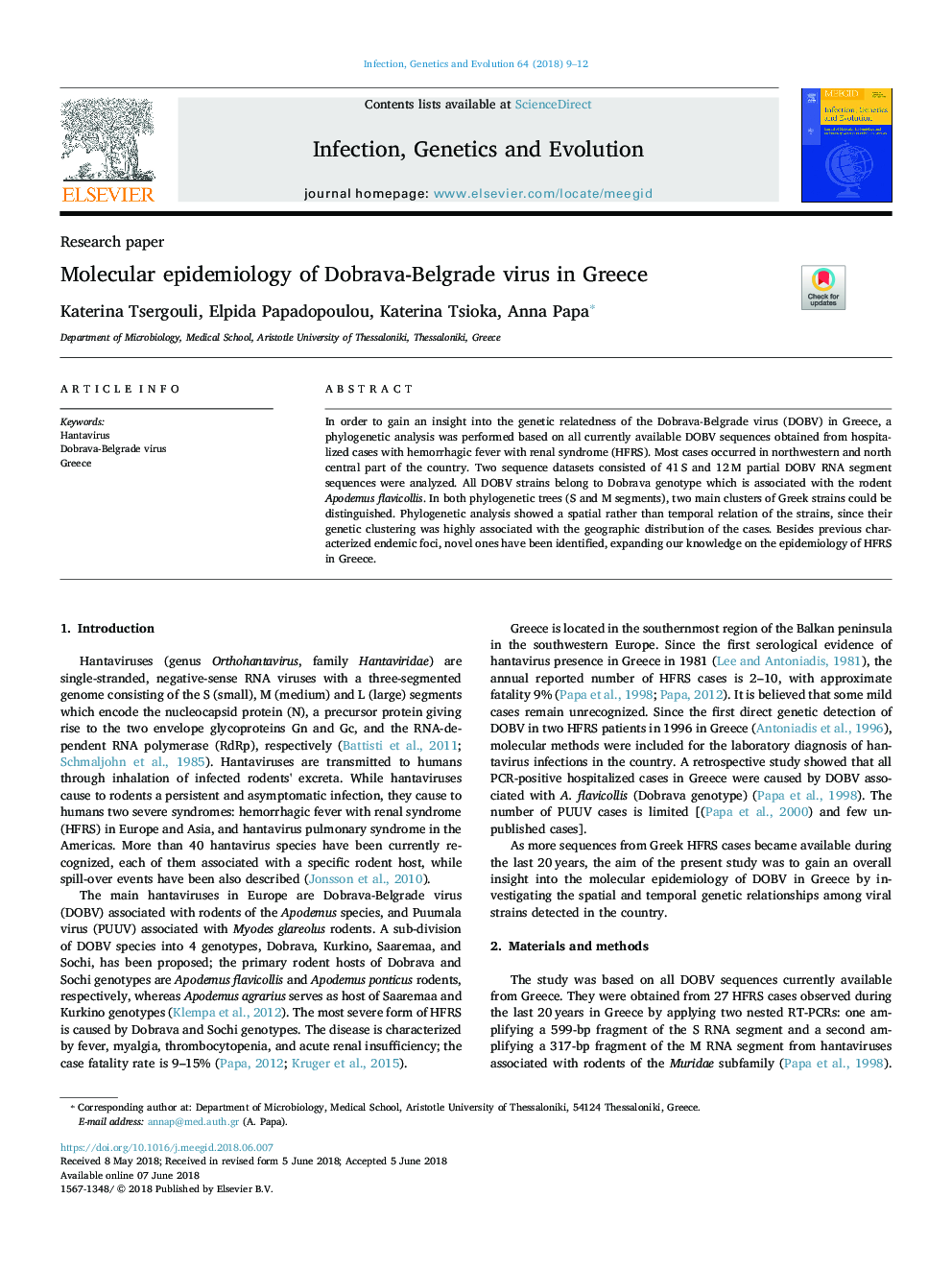| Article ID | Journal | Published Year | Pages | File Type |
|---|---|---|---|---|
| 8646539 | Infection, Genetics and Evolution | 2018 | 4 Pages |
Abstract
In order to gain an insight into the genetic relatedness of the Dobrava-Belgrade virus (DOBV) in Greece, a phylogenetic analysis was performed based on all currently available DOBV sequences obtained from hospitalized cases with hemorrhagic fever with renal syndrome (HFRS). Most cases occurred in northwestern and north central part of the country. Two sequence datasets consisted of 41â¯S and 12â¯M partial DOBV RNA segment sequences were analyzed. All DOBV strains belong to Dobrava genotype which is associated with the rodent Apodemus flavicollis. In both phylogenetic trees (S and M segments), two main clusters of Greek strains could be distinguished. Phylogenetic analysis showed a spatial rather than temporal relation of the strains, since their genetic clustering was highly associated with the geographic distribution of the cases. Besides previous characterized endemic foci, novel ones have been identified, expanding our knowledge on the epidemiology of HFRS in Greece.
Related Topics
Life Sciences
Agricultural and Biological Sciences
Ecology, Evolution, Behavior and Systematics
Authors
Katerina Tsergouli, Elpida Papadopoulou, Katerina Tsioka, Anna Papa,
